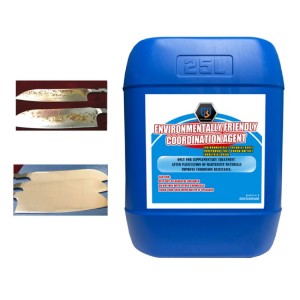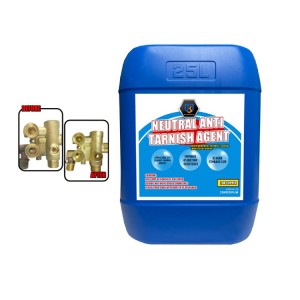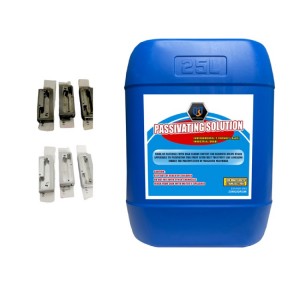Silane Coupling Agents For Aluminum



Silane Coupling Agents For Aluminum [KM0439]
SIXADVANTAGES TO CHOOSEUS
Eco- Fricendiy\Easy operation\Safe to Use\Short Leadtime\Highly efficient\Factory Direct

Features
The product from special formulation of silane system which can quickly form a clean-free film on the surface not only improves the corrosion resistance of the material, but also improves the adhesion with coatings like baking varnish.Also it has good compatibility with Tiger Powder among the market.
product description
Silane coupling agents are commonly used in the surface treatment of aluminum to improve bonding and adhesion to other materials such as polymers, coatings or other metals. Silane molecules contain reactive functional groups that can covalently bond to the aluminum surface, as well as hydrophobic organic groups that can interact with organic molecules in the material to be bonded.
Some commonly used aluminosilane coupling agents include:
- Aminopropyltriethoxysilane (APTES): This silane has amine groups that can react with carboxylic or other acidic groups on the polymer surface to form strong covalent bonds. APTES is commonly used to bond aluminum to polyethylene, polypropylene or other plastics.
- Methacryloxypropyltrimethoxysilane (MPS): This silane has methacrylate functionality and can be polymerized with acrylic monomers or other vinyl groups to form strong chemical bonds. MPS is commonly used to bond aluminum to acrylics, epoxies, or other vinyl-based polymers.
- Glycidoxypropyltrimethoxysilane (GPTMS): This silane has epoxy functionality that can undergo ring-opening reactions with hydroxyl groups or other nucleophiles to form covalent bonds. GPTMS is commonly used to bond aluminum to polyurethanes, epoxies, or other materials with reactive hydroxyl groups.
Instructions
| Product Name : Clean-free ceramic conversion agents for aluminum |
Packing Specs : 18L/Drum |
| PHValue : Neutral | Specific Gravity : N/A |
| Dilution Ratio : 1:40~50 | Solubility in water : All dissolved |
| Storage : Ventilated and dry place | Shelf Life: 12 months |
| Item: | silane-coupling-agents-for-aluminum |
| Model Number: | KM0439 |
| Brand Name: | EST Chemical Group |
| Place of Origin: | Guangdong, China |
| Appearance: | Transparent colorless liquid |
| Specification: | 18L/Piece |
| Mode of Operation: | Soak |
| Immersion Time: | 1~3 mins |
| Operating Temperature: | Normal atmospheric temperature |
| Hazardous Chemicals: | No |
| Grade Standard: | Industrial grade |
Features
The product is commonly applicable to anti-oxidation protection for gold andsilver, as well as anti-oxidation and salt spray resistance of copper and aluminum.Lots of manufacturers use it as a sealing agent to improve the corrosion resistance of products.
FAQ
Q1: What’s your company’s core bussiness?
A1: EST Chemical Group, founded in 2008, is a manufacturing enterprise mainly engaged in the research, manufacture and sales of rust remover, passivation agent and electrolytic polishing liquid. We aim to provide better service and cost-effective products to global cooperative enterprises.
Q2: Why choose us?
A2: EST Chemical Group has been focusing on the industry for more than 10 years. Our company is leading the world in the fields of metal passivation, rust remover and electrolytic polishing liquid with a large research & development center. We provide environmentally friendly products with simple operation procedures and guaranteed after-sale service to the world.
Q3: How do you guarantee the quality?
A3: Always provide pre-production samples before mass production and conduct final inspection before shipment.
Q4: What service can you provide?
A4: Professional operation guidance and 7/24 after-sale service.








![Chromium-Free Passivation Solution For Stainless Steel [KM0406]](https://cdn.globalso.com/estgt/Coordination-Agent-ID4000A-1-300x300.jpg)



